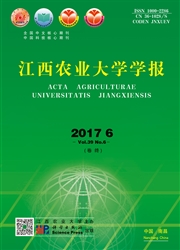

 中文摘要:
中文摘要:
以中亚热带典型常绿阔叶林的主要优势树种丝栗栲(Castanopsis fargesii)和苦槠(Castanopsis sclerophylla)幼苗为研究对象,通过MSR-2420红外辐射增温装置和人工施氮(对照、质量分数为0.125%和0.25%NH4NO3溶液),设置出不同的增温和施氮梯度,研究增温和施氮对丝栗栲和苦槠幼苗生长状况的影响。结果表明:MSR-2420红外辐射增温装置处理引起了小气候环境的明显改变。随着在设定环境下生长时间的增加,丝栗栲和苦槠幼苗单株的地径和苗高均显著增加(P〈0.01)。同一测量时间、同一处理条件下,苦槠幼苗的地径和苗高均显著高于丝栗栲(P〈0.01)。与对照相比,增温和施氮均明显提高了丝栗栲和苦槠幼苗的生物量,但其地上生物量与地下生物量的比值未发生显著变化。
 英文摘要:
英文摘要:
Taking Castanopsis fargesii and Castanopsis sclerophylla seedings as the study target, the domi- red radiation warming devices and artificial nitrogen fertilizer (control,0. 125% NH4NO3 solution and 0.25% NH4NO3 solution), a sequential interaction of air temperature warming and soil nitrogen application was setup. The effects of air temperature warming and soil nitrogen applicatibn to the growth of Castanopsis fargesii and Castanopsis sclerophylla seedings are illustrated in this paper. The results showed that: MSR -2420 infra- red radiation warming device treatment caused a Significant change of microclimate environment. With the in- crease of growth time under the artificial control conditions, the seeding height and ground diameter of Castan- time and other conditions, the seedling height and ground diameter of Castanopsis sclerophylla were significant- ly higher than that of Castanopsis fargesii (P 〈 0.01 ). Compared with the control, warming and nitrogen ferti- lization significantly improved the biomass of Castanopsis sclerophylla seedlings; however there was no cant change in the ratio of the aboveground biomass to the underground biomass. signifi
 同期刊论文项目
同期刊论文项目
 同项目期刊论文
同项目期刊论文
 期刊信息
期刊信息
